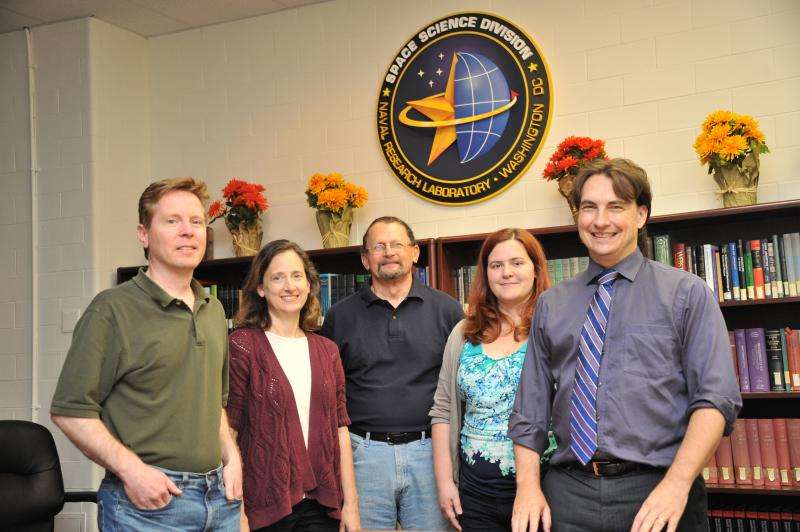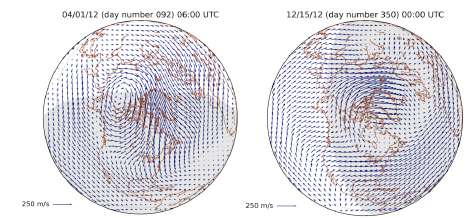Scientists update horizontal wind model

Scientists at the U.S. Naval Research Laboratory (NRL) have updated the Horizontal Wind Model (HWM) that describes the climate of the upper atmospheric neutral winds. This improved empirical tool will help scientists as they plan and build the next generation of physics-based space weather prediction systems. This work was published in Earth and Space Science, April 2015.
The improved HWM pulls together 73 million independent observations from 44 different instruments obtained over the last 60 years to describe the atmosphere's global wind patterns from the ground up to 500 km altitude as a function of altitude, day-of-year, and time-of-day.
The HWM development is important because thermospheric neutral winds above 100 km can interact with charged particles in the ionosphere, which is the embedded plasma within the neutral thermosphere, to create electric fields and currents. This dynamic process, known as ion-neutral coupling, can dramatically redistribute ionospheric plasma and impact the propagation of radio waves through the region. Thus, DoD systems such as over-the-Horizon Radar (OTHR), high-frequency communication, and GPS all can be strongly affected by thermospheric neutral wind variability. Armed with the HWM tool, scientists will be able to formulate physics-based forecast models of space weather, particularly as it affects the bottom side of the ionosphere for Navy OTHR systems.
Using advanced data assimilation techniques, a total of 24,000 unknown model coefficients are adjusted to encapsulate present observationally based scientific knowledge about the general circulation and oscillating tidal structures that constitute the bulk of the weather in the neutral upper atmosphere, or thermosphere.

NASA developed the original concept for the HWM tool in the late 1980s. When the original author of the code for the tool retired from NASA, he came to work at NRL as a consultant for a few years, so NRL inherited the code at that time. In 2007, NRL's Dr. Douglas Drob, Space Science Division, led the efforts to rewrite the code from the ground up, adding a number of new data sets. Today's current revision to the HWM tool is the second major update.
"Thirty years of HWM empirical model development has shown that to properly solve the wind patterns at and just below satellite and ionospheric altitudes (approximately 100 to 500 km above the surface of the earth) we must use both in-situ satellite and optical ground-based wind measurements," explains Drob. "In the future, this will also become important for real-time meteorological forecast models that include the low-earth orbit satellite altitude region to predict 'space weather.' As the space science community works with the meteorology community to develop better real-time space weather models, it is important not to lose sight of historical datasets." There are both agreements and discrepancies between space weather models and the observational data sets, as well as between the various observational data sets themselves. "The identification and resolution of these discrepancies is fundamentally important," says Drob, "and empirical models like HWM play a critical role in this activity."
At present there are no operational capabilities to observe thermospheric neutral winds and as a result, existing ionospheric specification systems must make ad hoc assumptions about what the neutral winds might be at any given time and location. Unified whole atmosphere weather models that would issue upper atmospheric forecasts are being developed, but they are as of yet far from operational and they lack adequate data with which to validate their forecasts.
The NRL-developed HWM fills this data gap and will serve as a key validation tool with which to test these upper atmosphere forecasting models.
Provided by Naval Research Laboratory




















